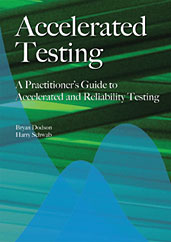Technical Paper
A Probabalistic Approach to Evaluating Financial Risk and Determining Testing Requirements for Low Volume New Products
1986-09-01
861280
For years, producers of low to medium volume products of high unit cost have been faced with the questions-“How much do we test?” and “What if we don't?” Today, manufacturers cannot compete in the market if these questions are not answered. This paper presents a methodology for answering these questions quantitatively. It applies Bayes Theorem of “apriori knowledge” to generate a probabalistic model of the new product testing task. It uses the existing knowledge and expertise within the organization and a simple matrix technique to determine the testing needs for the project at hand. This paper is intended to address the issues of durability and reliability of new products that are manufactured in relatively low volumes, such as Lift Trucks and Farm Equipment and/or products of high unit cost such as construction or off highway machinery.

